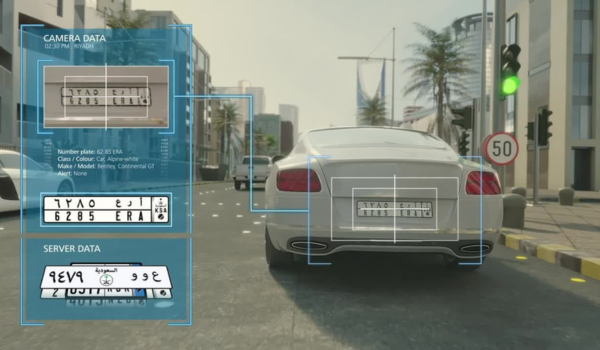Executive Summary:
In this blog, we examine the power of ANPR software which focuses on ANPR results with OpenCV and Python. We will discover the features and useful applications that make ANPR a modern technology as we work our way through the complexities of this dynamic duo.
Introduction:
ANPR results with OpenCV and Python have emerged as a vital instrument in a variety of fields, including traffic management and law enforcement.
Developers and organizations may now easily recognize and extract license plate information from images by using ANPR results with OpenCV and Python.
Understanding ANPR
The brains behind the ANPR system are Automatic Number Plate Recognition (ANPR) and License Plate Recognition (LPR) software. These programs use advanced optical character recognition (OCR) algorithms to automate the laborious process of reading and interpreting license plates from images or videos.
This essential program surpasses conventional manual approaches in efficiency and accuracy by advancing ANPR software with capabilities including pattern recognition, image preprocessing, and seamless database integration.
In addition to its scalability and real-time processing capabilities, ANPR software is indispensable for a wide range of applications, including traffic management and law enforcement. As it develops at the nexus of automation and technology, it promises unparalleled precision and flexibility.
The Collaboration of OpenCV and Python
The effectiveness and functionality of Automatic Number Plate Recognition (ANPR) systems are greatly influenced by the combination of OpenCV and Python.
One of the mainstays of computer vision and machine learning is OpenCV or the Open Source Computer Vision Library. Because it’s open-source, it encourages teamwork, which leads to ongoing innovation and progress.
Combining this adaptability with Python’s well-known readability and simplicity makes them a powerful combination for creating ANPR systems.
Essentially, OpenCV and Python play a revolutionary role in ANPR software. They serve as facilitators, offering the adaptability and resources required to successfully negotiate the challenges of character recognition and image processing.
Within the ever-changing realm of ANPR software, this combination not only expedites the development process but also improves the accuracy and performance of ANPR software, making them reliable solutions for anything from traffic control to law enforcement.
ANPR workflow with OpenCV and Python
The ANPR software workflow navigates the challenging path from picture acquisition to character identification by deftly combining the powers of Python and OpenCV.
The first steps of the process are handled by OpenCV, which performs picture preprocessing operations like as resizing, noise removal, and contrast improvement. This initial stage of preparation is essential for improving image data and laying the groundwork for later phases.
OpenCV’s powerful image processing skills enable efficient license plate extraction as the ANPR algorithm develops.
Python’s flexibility becomes evident as one moves through the ANPR workflow, enabling developers to easily coordinate segmentation, character identification, and post-processing.
Python’s easy-to-read grammar and readability make it possible to design complex algorithms and guarantee that every step is completed effectively. Python and OpenCV work together to provide a system that is both adaptable and adaptive, able to handle a wide range of circumstances and license plate forms.
Key Features and Advantages of Python and OpenCV
The main advantages and characteristics of using automatic number plate recognition (ANPR) software, especially when combined with OpenCV and Python, are crucial in making this technology a mainstay of contemporary applications.
-
Accuracy:
The combined effect of Python and OpenCV greatly improves the accuracy of license plate recognition.
Because of Python’s flexibility and OpenCV’s powerful image-processing capabilities, ANPR systems perform well even under difficult circumstances.
For uses like security and law enforcement, where accurate identification is essential, this precision is vital.
-
Real-time Processing:
One unique benefit is OpenCV’s efficiency, which makes it possible for ANPR systems to process photos and videos in real time.
This capacity, which enables quick and instantaneous license plate detection, is very useful in dynamic settings like traffic monitoring.
OpenCV’s and Python’s smooth integration makes it possible for an ANPR system to be quick to respond and flexible enough to change with the times.
-
Flexibility:
Because of Python’s natural adaptability, developers can easily change and modify ANPR solutions.
Because of its rich libraries and understandable syntax, it’s the perfect language for creating complex algorithms and customizing ANPR systems to match unique needs.
This flexibility is essential for handling a range of situations, guaranteeing that the ANPR software stays adaptable and useful in a number of contexts.
-
Integration:
The smooth integration of ANP results with current systems is evidence of the good relationship between Python and OpenCV.
ANPR software is a great option for increasing automation and security in a variety of industries because it works well with a wide range of infrastructures.
A comprehensive strategy is ensured by the integration of ANPR with other technologies and databases, making it a crucial part of larger systems.
Challenges and Future Developments
Even though Automatic Number Plate Recognition (ANPR) has advanced significantly since OpenCV and Python were combined, there are still issues that need to be resolved, like handling different lighting situations and different plate forms.
In order to overcome these obstacles and enhance ANPR technology, it is probable that forthcoming advancements will concentrate on integrating machine learning.
ANPR systems can achieve improved recognition accuracy and adapt more easily to changing license plate designs by utilizing machine learning algorithms.
This will guarantee that ANPR will continue to lead the way in automated license plate recognition systems in terms of precision and adaptability in the future.
Conclusion
The combination of OpenCV, Python, and ANPR software has brought in a new era of precision and efficiency in license plate recognition.
The uses and advantages of ANPR are expected to grow as technology develops further, pointing to a time when automated tracking and identification will be a necessary part of everyday life.










